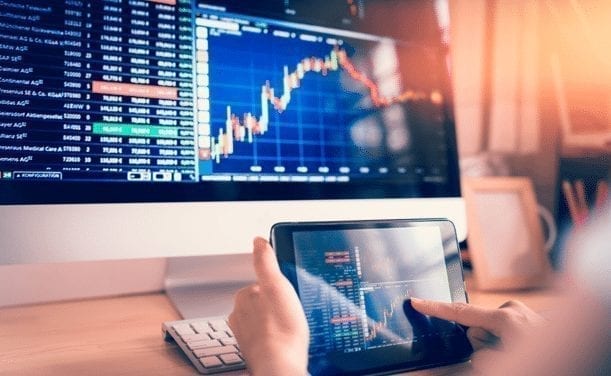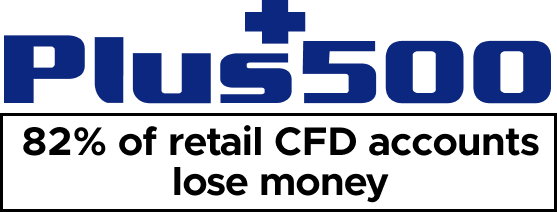Share buybacks are known by a lot of names – share repurchase, stock repurchase or even stock buybacks.
But the concept underlying the process is one and the same. When companies ask shareholders to tender shares they own for repurchase (by the firm) through cash, a buyback of shares results. Shares that are repurchased are part of the company’s equity but classified as treasury stocks or shares.
- Share buybacks have benefits such as tax efficiency, boosting stock prices and more.
- The downsides are earning manipulation, bad market timing etc.
- Buybacks can be tried out through 3 methods – open market, tender offer and Dutch auction
- Buyback decisions depend on the wider economic climate as well.
Generally, companies with excess cash have the option of reinvesting in securities, increasing cash dividends, investing in the business itself, or acquiring another company.
The buyback of shares, procedure-wise is relatively simple. The company decides to buy back the shares owned by stockholders, and usually does so on the open market. Holders of the stock usually do not know who they are selling to, and there is no requirement for you to anything if you are deciding to hold your shares.
Share buybacks remain one of the most popular options for providing additional shareholder value; the process is seen as a way to increase demand or buying pressure, and is expected to lead to share price appreciation, or stability. That is not always the case, but it is one of the core reasons for the tactic.
Why Share Buybacks?
The buyback of shares takes place when a company ‘returns wealth’ to its investors or shareholders. There are numerous reasons why companies repurchase their own shares. Apart from an alternative to paying dividends to stockholders, share buybacks also restructure the capital structure of the company, without the need to borrow or seek loans. This means the company essentially invests in itself.
Share buybacks improve company metrics and the repurchase reduces the free float, and can also boost company stock prices.
If a company is looking to boost financial ratios like ROE, Return on Assets, or EPS, stock buybacks are an instrument that can deliver positive transformation.
Maintaining the dividend pay-out ratio despite surplus cash is yet another motivation for a buyback. Moreover, avoiding excessive cash building up can also pose an obstacle to a potential hostile takeover.
The effect of buybacks on PE ratio of stocks is tangible because this ratio is calculated by dividing the stock price by the EPS. Though generally, buybacks boost the PE ratio, this cannot always be guaranteed.

Is A Buyback A Good Use Of Capital?
Taking advantage of undervaluation of shares in the market is one of the reasons for companies to buy back shares. It also provides a tax-efficient cash distribution alternative to dividend payouts.
Buybacks have been criticised as a waste of company money better spent on R&D development, hiring more workers or paying larger dividends. But such assessments are cherry picking, as only some companies have misused buybacks.
According to a Harvard Business Review study, buybacks can be important, provided they are not at the expense of missing out on higher priority areas. Growth at any cost without a sustainable market to serve is counterproductive. In most simple terms, if the company does not have any real opportunities for growth that they can use the spare cash for, then buybacks may be one of the better uses of that capital.
Conduct M&A in a dwindling market does not make sense, neither does investing in businesses models which are having to pivot. One example here is the oil and gas industry that increasingly uses dividends and share buybacks to return value to shareholders, and maintain the market cap or valuation of the firm, despite not having a path to growth or expansion. The operations of that business currently are successful, but there is less appetite to see it expand, and as such, return of value to holders is perceived as one of the better ways to continue.
Buybacks offer companies flexibility, which is why many blue-chip companies combine this with dividends for returning shareholders capital through accelerated EPS and dividends per share (as profits are shared across progressively smaller share pools).
Share repurchases are more tax efficient than dividends where shares are held in taxable accounts. Additionally, buyback companies outperform on an average.
The pitfalls are there, too. Earnings manipulation by the company is one major stumbling block. Not all buybacks yield profits, especially those with bad market timing. Dividends also protect against a volatile market, while buybacks don’t. There’s less stockholder choice in the case of buybacks.
Share Buybacks: An Example Of Value Creation For Investors
In case of the buyback of shares, meaning, and benefits for the stockholder derive from an increase in share value. Share buybacks reduce the number of shares outstanding. In cases where a company’s income or earnings shows no change, higher EPS after the buyback is the result of reduced float. Share buybacks also help those shareholders who hold onto the stock, as they get a bigger equity share.
Consider how a company with a total float of 100,000 shares and issuing 100% of this to its shareholders is impacted by a share buyback.
- If we assume 20 shareholders own 5,000 shares each, they will individually own 5% of the company.
- The buyback of shares of even 4 shareholders means that 20,000 shares are removed from circulation. Of the total 80,000 shares remaining (across 16 stockholders), the percentage of the company’s stock they would hold is now 6.25%.
Shareholders specifically get tax savings due to share buybacks. This involves payment of corresponding taxes on dividends considered shareholder income. On the other hand when sold the capital gain tax might weight heavier on the shareholder.
They are, therefore, taxed as per ordinary rates. Post a stock repurchase, rather than paying taxes on dividends, capital gains tax paid can be far lower in value.
The buyback also has the potential to increase stock prices by reducing the number of shares that are available to buy. Stock markets are a demand and supply oriented business, and as you know, if you reduce supply and maintain demand, then price appreciation usually follows.
Share buybacks signal to markets that the company is healthy financially, and does not have cash-flow issues, potentially attracting a greater number of investors who are seeking companies delivering shareholder value.
Share Buybacks Vs Dividends
If a company returns cash to its stockholders, there can be two methods to accomplish this. The first is just through conventional routes like paying cash dividends. A second one is through share buybacks.
The stockholders make the decision to hold on to the shares or tender these for repurchase. If the former is chosen, the stockholder gives up the shares, takes payment in cash and pays the required capital gains tax. In contrast, companies choosing to return cash through dividend payments give the investors no choice. However, these are deemed more dependable.
Stock repurchase may or may not provide investors with a sense of assurance, depending on the company’s circumstances. How is the buyback of shares procedure timed? Most experts agree the best time for a stock repurchase is when the share price is undervalued. Companies could not wish to purchase stocks that are high-priced, even if they are buying back their own shares! Specifically, the timing decides the modes of share buybacks.
Buyback Methods
The 2 most common methods companies buyback shares are the open market and tender offer method.
- Buying directly from the open market involves paying the present or prevailing stock price at the time of purchase.
- The second option revolves around making the share buyback offer to stockholders, who may tender shares directly to the company at a fixed price.
In the first option, the company is your typical individual investor, and more would be spent on the repurchase. This is because stocks are likely to climb in value post a buyback announcement.
In the tender offer option, the final decision may rest with the shareholder. If the shareholders agree, the tendering of shares or a part thereof within the stipulated time frame takes place. A tender offer is based on shares planned to be repurchased and the price the company is willing to pay.
Tenders which then come from the shareholder include the shares they are willing to sell and the price at which they will part with these stocks. The company will find the right mix or combination to purchase the shares at the lowest cost, at the end of the buyback period. Tender offers involve paying an even higher price than the open market method, as no stockholder will sell for less than the market price.
Method 3 – The Dutch Auction
Companies that want the best of both worlds (open market, and tender) can opt for what is known as the Dutch auction. This method is like the tender offer where a company specifies the price range it will pay and invites shareholders to name their price.
The difference is that the stockholders are bound to name different prices spanning a certain range, resulting in a demand curve for a stock. The lowest price will be chosen by the company and that will be the purchase price paid to investors selling at that price, or lower than that.
If the shareholders tendered more shares than originally sought for a company buyback, investors who tendered at or below purchase price are accorded priority.
Shares purchased in number are calculated on pro-rata method in this buyback mode so shareholders may even sell a portion of the stocks rather than their whole amount owned. If the shareholders selling the stocks tender less than that sought by the company, the offer may either be cancelled or the shares may be purchased at the maximum price quoted, provided it is within the offer’s price range. Thus, there are conditions which influence the direction this auction of shares takes.

To Sell During A Buyback?
Research by McKinsey found that between 2004 and 2010, shares were repurchased only if the company and the market were doing well and vice versa. Even during the market peak in 2007, this trend was noticed. When the markets were impacted post the housing loan crises, few companies bought back shares. So, even the wider economic climate may play a pivotal role in a buyback decision.
S&P 500 companies between 2004 and 2011 were found to buyback shares when underlying earnings, as well as share prices, are high. Share repurchases over up and down roller-coaster market cycles like 2006 to 2010 delivered lower returns though. Companies, therefore, may not always time the market. Specifically, buybacks may take place when there is surplus cash or when companies evenly distribute repurchase across time.
When it comes to share buybacks, a whole lot more than just the PE ratio of stocks or ROE is impacted.
Most of the time, shareholders will have to consider several factors before deciding to part with their shares. The trade-off between quick money from selling shares or steady cash flow of dividends comes into play here. Cost-benefit analysis apart, personal investment goals of the stockholder also play a critical role.
The buyback of shares, meaning of the sale for the stockholder and the entire procedure involved must be carefully considered. Is the investor a cautious individual with steady income needs or a risk-taker who believes in making quick cash? Shareholders may also need to study the motives of the company for the buyback, its financial and audit reports and implications of the stock repurchase for stock value.
Shares repurchased were on the rise prior to the 2008 economic recession. In the US alone, the total value of shares repurchased in 1980 was USD 5bn and grew by over 60 times in 2005. Share repurchases often focus on buying low and selling high. But markets are volatile and long-term trends can quickly reverse.
PEOPLE WHO READ THIS ALSO VIEWED:










